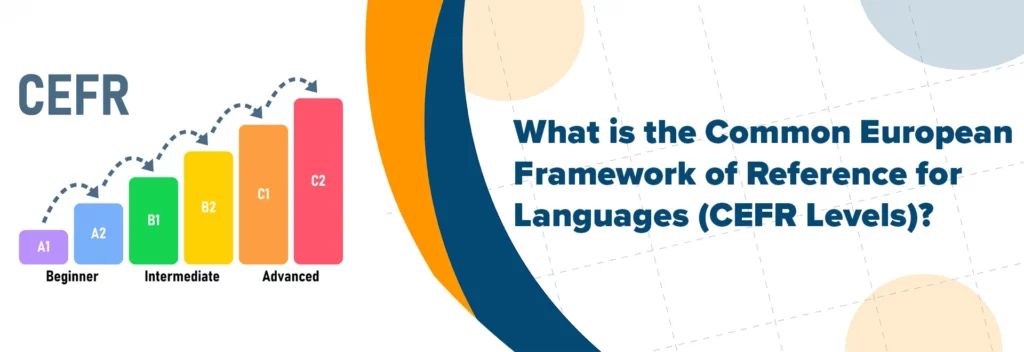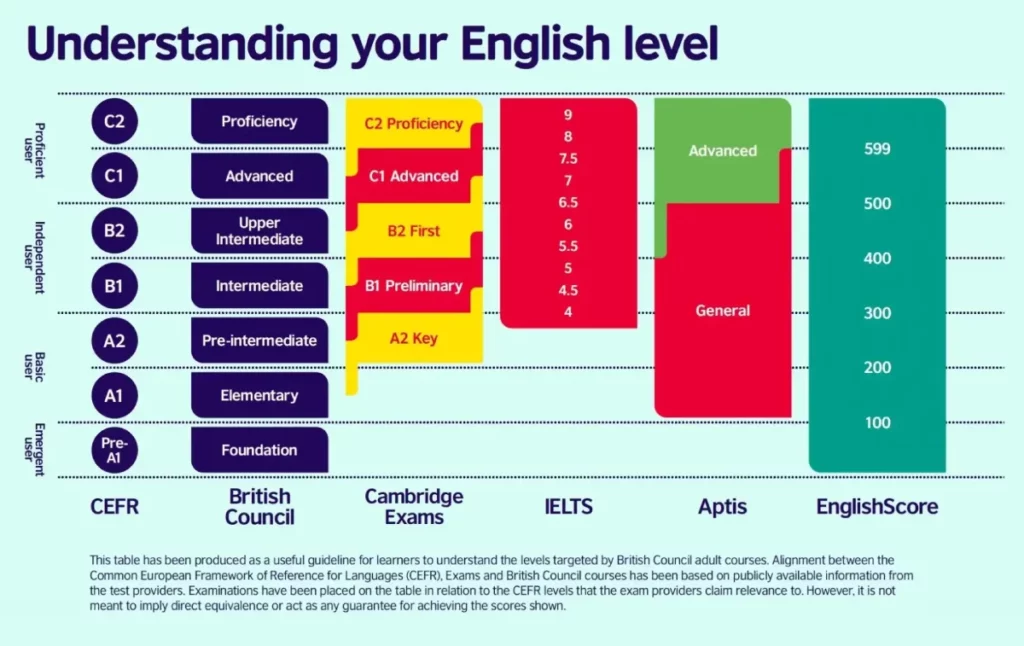
A Comprehensive Overview of the Common European Framework of Reference for Languages (CEFR Levels)
What is the Common European Framework of Reference for Languages?
Are you familiar with the Common European Framework of Reference for Languages or the CEFR? As an ESL learner, you must have heard of it before but do not clearly understand its concept. ESL teachers and learners use CEFR Levels to understand their language proficiency level.
The CEFR Levels are a set of guidelines to determine the particular English level of a language learner. CEFR levels matter to all language learners because they guide them on their language-learning journey.
Imagine you are applying for an ESL teaching job and you are confident enough of your English skills because you can communicate well and express yourself clearly in English. You think that you have the advantage of getting hired. Your friends tell you that you are good at English.
The hiring manager thinks, unfortunately, that you still need a lot to improve especially your grammar and vocabulary, as well as your accent. This is where CEFR levels come in.
The CEFR levels provide a clear objective for the learners’ particular skills. There are six levels in the CEFR. These levels break down language learning from A1, the basic level, up to C2, the most advanced level where the four macro skills are interconnected: Listening, Speaking, Reading, and Writing.
We will discuss each level of the CEFR Levels in this article to better understand which language level you need and which level your language skills belong to.
Understanding the CEFR Levels
The CEFR levels were developed by the Council of Europe in the 1960s and 1970s but were permanently established in the 1990s. The purpose of this is to promote cooperation among all European countries.
The CEFR levels have three bands equivalent to Beginner, Intermediate, and Advanced which are commonly used as language level references in some English schools. Similarly, the CEFR bands are called Basic, Independent, and Proficient and each band has two levels.
Adhering to international language standards, Cambridge English aligned its language levels with the CEFR as a reference for their examinations. The Cambridge English Scale uses the CEFR to provide clear and detailed information about the learners’ performance according to the standard language proficiency levels.
The British Council also provided a CEFR Levels table of reference so that learners can learn more about these standards and explains what learners at each level can do.

A1 – Elementary
Here is what A1 level learners can do:
- Learners in A1 are able to understand and use common and everyday expressions.
- They also know how to use simple phrases with noticeable lapses.
- A1 level learners can greet and introduce themselves to other people.
- Learners can also answer simple questions about their lives and personal details with frequent long pauses and incomplete sentence structures.
A2 – Pre-intermediate
Here is what A2 level learners can do:
- Learners are able to talk about very familiar topics and use expressions in sentences.
- They are able to communicate in simple conversations and tasks.
- Learners at this level can describe the things around them.
- Learners are able to exchange messages with others in simple and limited sentence patterns.
B1 – Intermediate
Here is what B1 level learners can do:
- They are able to understand the main points of a particular topic.
- Learners at this level can handle natural conversations and produce organized sentences.
- Learners can describe broad topics using simple words appropriate for the description.
- They are able to explain their opinions and talk about events, experiences, and other broad topics for discussion.
B2 – Upper Intermediate
Here is what B2 level learners can do:
- Learners at this level can easily comprehend complicated texts and understand the main ideas of a context.
- They are almost fluent so they can interact with others, even with native speakers, comfortably and confidently.
- They can write about familiar topics and elaborate their opinions further with minimal lapses in spelling, capitalization, punctuation, etc.
- They can hold a spontaneous conversation with anybody at the same level as them or higher.
C1 – Advanced
Here is what C1 level learners can do:
- Learners at this level are able to comprehend, analyze, describe, and conclude about certain complex texts as well as recognize implicit meanings.
- They have a wider range of vocabulary, using them appropriately in context.
- They can use the language flexibly and effectively in various situations like social interactions, and academic, and professional settings.
- Learners can express their ideas spontaneously and fluently and are able to provide justifications for their claims.
C2 – Proficiency
Here is what C2 level learners can do:
- Learners can easily deduce the meaning and analyze the content of a difficult text or article.
- Learners can flexibly express their opinions and comprehend them based on what they hear or see.
- They are very fluent in speaking and writing.
- They are able to lay down their thoughts through concrete examples and present valid arguments with coherence and conciseness.
- They have mastered advanced vocabulary and can use a wide range of the most difficult and unfamiliar vocabulary words.
The CEFR levels are a widely recognized tool to measure a language learner’s proficiency. It provides a standardized way to assess language skills across different languages and cultures.
How to determine your CEFR Level
To determine your current CEFR level, consider your ability to understand and communicate in the language.
Are you able to hold and follow simple conversations? Can you write a coherent paragraph?
Assess your skills in listening, reading, speaking, and writing so you can pinpoint areas for improvement and track your progress as you learn the English language.
After you determine which CEFR level your language skills belong to, you can decide to further your English studies or take standardized examinations like IELTS or TOEIC.
In some cases, the language school where you are enrolled can help you assess yourself and your language skills based on CEFR levels.
QQEnglish Level Descriptors
At QQEnglish, students who study for their very first lesson are assessed through a standard evaluation process. Students get their language level checked with the help of a language teacher. QQEnglish’s Level Descriptors are aligned with the CEFR levels but are explained more thoroughly and specifically.
The English levels of adults are different from those of kids, although the descriptions are almost the same. During the level assessment, there are suggested courses that students can take in accordance with the results of their evaluation.
Students can decide which curriculums they would like to take based on the courses and books suggested by their teacher. Adult curriculums are broader and more serious. The courses are set according to the student’s level. On the other hand, kids curriculums are more interactive where young learners get to enjoy their classes.
Take an assessment test at QQEnglish
Have you already assessed yourself and determined your English language level? If you did, you’re amazing! If not, then we can help you check it.
QQEnglish teachers can help you determine your proficiency level by taking the First Time Lesson. Teachers will be able to identify your strong areas in the language and also give you feedback on areas that need to be improved.
Take an assessment test at QQEnglish and track your progress.
Conclusion
The CEFR Levels are helpful tools to measure your proficiency and help you achieve your goals in language learning. Familiarize yourself with the framework and start achieving your goals with confidence.




